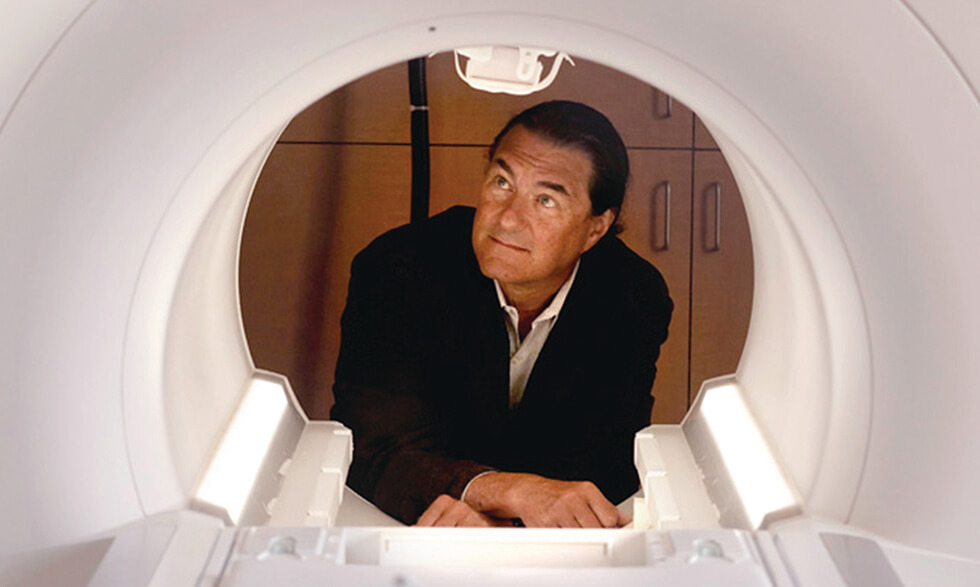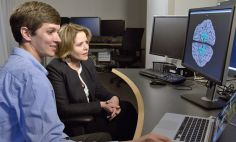Thanks to funding from the National Institutes of Health, including the National Institute on Aging (NIA) and private funds, there are many clinical studies and trials that are helping doctors and researchers discover what causes Alzheimer’s and how to treat it.
One such study is ADNI, or Alzheimer’s Disease Neuroimaging Initiative. For more than 10 years, ADNI researchers have been studying aging in the brain to better understand Alzheimer’s disease to prevent, treat, and cure it.
“We now know, thanks in large part to studies like ADNI, that the hallmarks of Alzheimer’s can appear in the brain and in some body fluids well before signs of memory loss are evident,” says NIA Director Richard Hodes, M.D.. “These discoveries have revolutionized our approach to the study of Alzheimer’s, as we seek to intervene as early as possible in the disease process to delay or even prevent memory loss and other cognitive impairment.”
NIH MedlinePlus magazine talked to Michael Weiner, M.D., principal investigator of ADNI at the University of California, San Francisco, about this research.
What is the Alzheimer’s Disease Neuroimaging Initiative study?
ADNI is one of the largest research projects on Alzheimer’s disease. The purpose is to understand how brain functions change over time. By taking images of the brain and using biomarkers (which are measurements of the biological makeup of the brain) we can track the brain’s structure and see how it works over four disease phases. These include memory issues, ability to process thoughts, losing control of moods and senses, and slowing of the heart and breathing.
What is the goal of the study?
The overall goal is to find a treatment and a cure for Alzheimer’s. Our newest phase of research, called ADNI3, is conducting clinical trials for brain imaging. By taking images of the brain, we can see changes that happen up to 10 years before actual Alzheimer’s symptoms appear. If we wait until symptoms appear, there is already too much damage to the brain. Brain scans, lumbar punctures (spinal taps), and biomarkers help us study brains over time and predict Alzheimer’s growth.
How does this research differ from other Alzheimer’s research?
A lot of research has been done on animals or from human autopsies. Live humans are needed to study the brain over time, before symptoms appear. Alzheimer’s research now uses various brain tests such as positron emission tomography (PET) scans, magnetic resonance imaging (MRIs), and spinal fluid from people who volunteer, and we can study how their brains change over time, rather than study brains that already have damage. Another difference is ADNI immediately shares all the data collected from clinical trials and posts it on the ADNI website. The information is available to any scientist in the world at no cost. As a result, more than 1,200 Alzheimer’s research papers have been published worldwide, which helps spread awareness and ultimately, find a cure more quickly.
What are some of the challenges of the study?
The biggest challenge is getting more volunteers. The volunteers can range from people who have no symptoms and are in good health to people with mild memory loss or a diagnosis of early Alzheimer’s. They even include people who may be at risk if they have a history of Alzheimer’s in their family. The more people who volunteer, the faster we may be able to prevent, treat, and cure the disease.
Are risks involved with volunteering for the clinical study?
Like most clinical trials, there are some risks, but they are minor. Privacy may be a concern to some, although all health information is locked up. Lumbar punctures involve inserting a needle in your lower back to get spinal fluid. It’s a routine procedure but still has some risks. PET scans have the risk of slight radiation exposure. Unlike many other clinical trials, this one does not involve any experimental pills or infusions. We are taking images of brains to study them over time.
What have you learned after 10 years?
We can now diagnose Alzheimer’s on a much larger scale and in multiple locations nationwide, not at just one lab. With PET scans and lumbar punctures, we’ve also learned that some people who may appear to have Alzheimer’s on the outside don’t seem to have enough of it in their brains to be qualified as having the disease. Most importantly, having biomarkers is an important way to predict Alzheimer’s growth in the brain. This helps us understand what might happen to a brain in advance and whether it can be treated early.
How do I volunteer for the ADNI3 study?
Visit the Alzheimer’s Disease Neuroimaging Initiative ADNI3 website.






